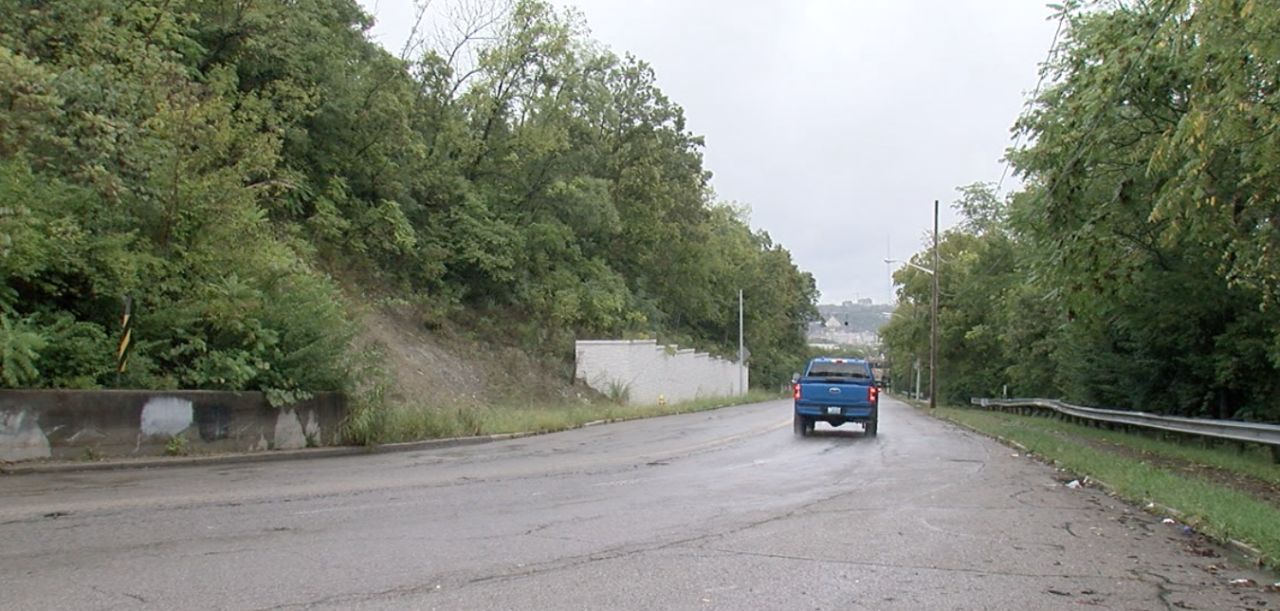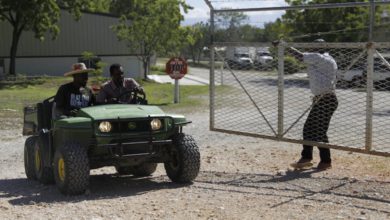
CINCINNATI — After nearly two years, the $18 million Columbia Parkway Hillside Stabilization Project is essentially finished, just in time for Cincinnati’s historically wetter months.
Contractors began work in November 2019 along U.S. 50 after a series of major landslides shut down the parkway multiple times, causing significant cleanup for city workers and traffic backups for Downtown commuters from the East Side.
“Columbia Parkway was one of those where we were having constant landslides that were falling over the wall,” said city Transportation and Engineering Director John Brazina.
Crews stabilized the hillside in eight to 10 spots, either by building retaining walls or using ground nails and mesh netting to control loose soil.
But the stabilization project, while a dramatic improvement, may not be a final fix for the landslide-prone hillside.
Lot Tan
“Just because we fixed some of the areas on Columbia Parkway, some of the areas may still move,” Brazina said.
Brazina monitors which city hillsides are most vulnerable. In 2019, the city closed a stretch of Elberon Avenue so crews could build a smaller retaining wall. The city has also built several walls to control landslides along sections of Riverside Drive.
Cincinnati is an old city with aging infrastructure. It is built into a hillside and surrounded by rivers, all of which make it especially vulnerable to landslides.

Lot Tan
City leaders predict that climate change and extreme weather events will cause even more landslides and flooding in coming years.
“Over the past ten years, the city of Cincinnati has experienced nine 100-year storm events,” said Michael Forrester, director of the city’s Office of Environment and Sustainability. “We’re seeing this frequency increase, and we’re seeing the impacts in our neighborhoods.”
Forrester predicts the city’s lower-income neighborhoods will be disproportionately affected by climate change because of their lack of trees and green space.
Forrester plans to speak at a virtual event at 6 p.m. on Wednesday about climate change in Cincinnati and Northern Kentucky. The event will focus on Groundwork Ohio River Valley, which worked with NASA DEVELOP's Cincinnati & Covington Urban Development team to study extreme weather’s impact using a hillside analysis.
“Basically, if you live at the top of a hill or at the bottom of a hill, you are exposed to a landslide risk,” Forrester said.

Lot Tan
Landslides occur more frequently in wetter months, when the ground is already saturated, and when trees are dormant in colder months, Forrester said.
“What we’re seeing in our extreme weather patterns is – not only are we seeing more rain, but we’re seeing these microbursts. These very small, isolated areas of extreme storm activity,” Forrester said. “If that happens in the spring and in the summer, that comes down as rain. If that happens in the winter, that comes down as snow.”
Cincinnati officials need to build a “more resilient city” that’s able to stand up to increased heat and water, Forrester said.
“The city of Cincinnati is an old city … so these extreme rain events, they’re dumping water in infrastructure, in storm sewers, in sewers that weren’t designed to handle that amount of water,” Forrester said. “We’re going to see localized flooding as our infrastructure gets overwhelmed.”
Brazina monitors which hillsides are actively moving, especially as extreme weather approaches.

Lot Tan
“Obviously, the heavy rains affect the hillsides but …the after-affect of that is also the flooding,” Brazina said. “The city has all of that infrastructure – roadways, sidewalks, curbs, sewers, traffic signals, all of it gets affected by flooding events.”
Cincinnati, which will someday have a warmer climate similar to that of Little Rock, Arkansas, will fare much better through climate change than many other places, Forrester said.
“The city of Cincinnati itself is in a significantly stronger position than many other cities across the country,” Forrester said. “We’re in a place that has access to water. We’re a place that’s not impacted by coastal storms as much. We’re a place that’s not subjected to wildfires."
To register and watch the free event on the impact of climate change locally, information can be found at https://greenumbrella.org/event-4485393








